Next Adventure Loading
Adventures
Introduction
Adventure #1: Identify and Understand the Problem
Adventure #2: Imagining Ideas to Solve the Problem
Adventure #3: Designing an Inventive Solution
Adventure #4: Building the Prototype
Adventure #5: Testing and Revising the Prototype
Adventure #6: Communicating Your Process
Curiosity Creek
Adventure #2:
Imagining Ideas to Solve the Problem
In this adventure, you will learn:
-
-
- What "brainstorming" means.
- How to brainstorm ideas for solving the fish problem.
- How to identify the best ideas.
- What are "patents" and where to find out about them.
-
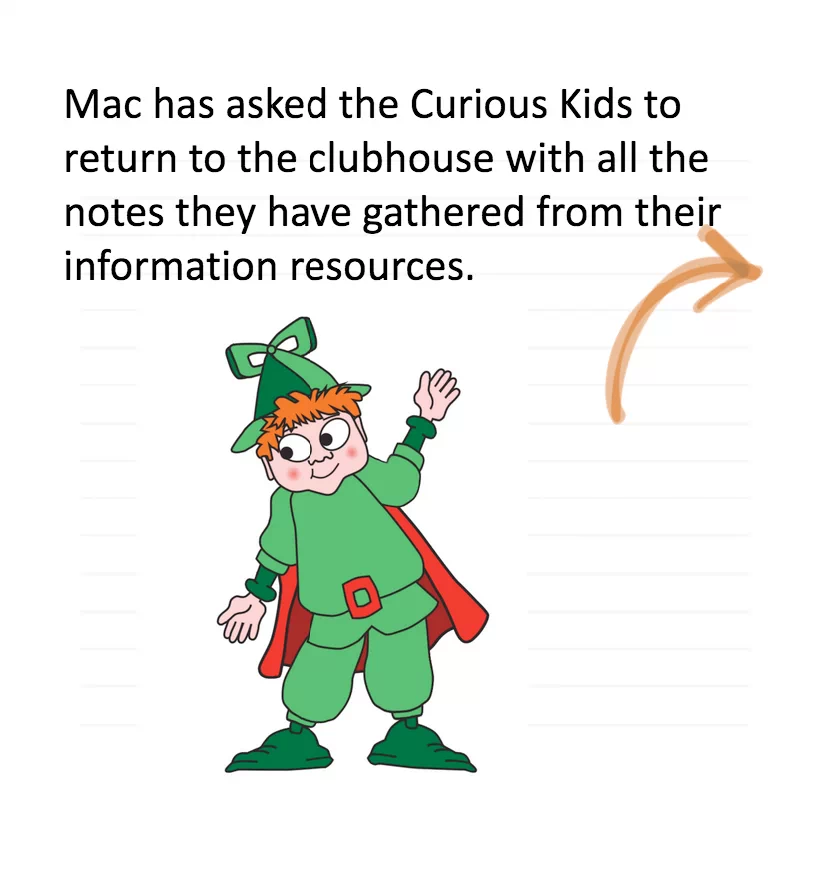
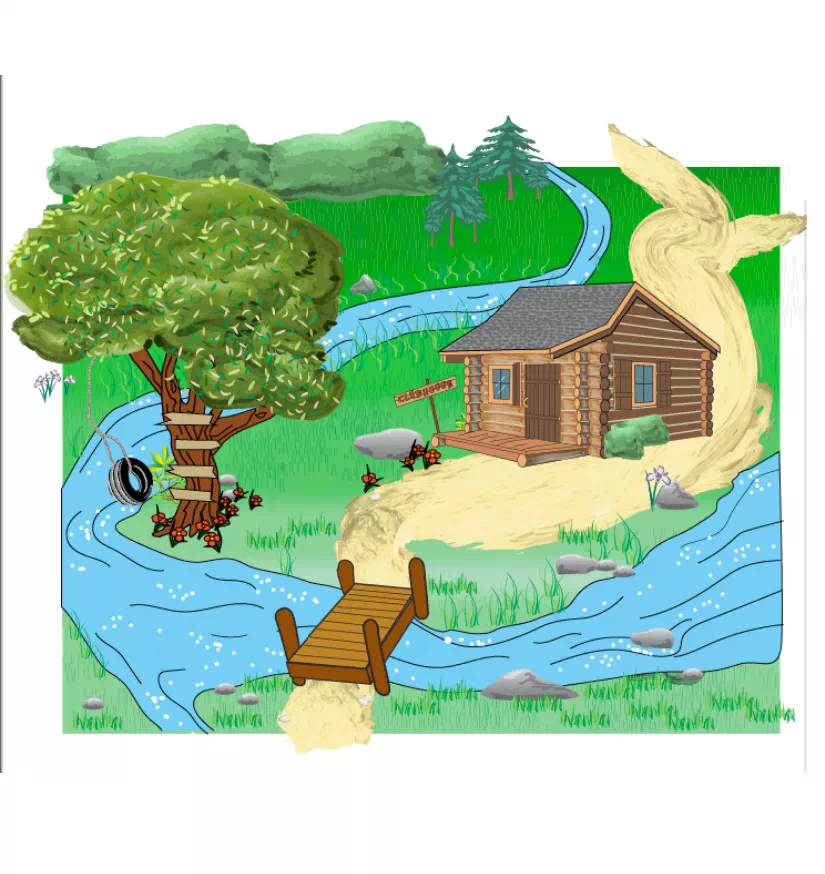
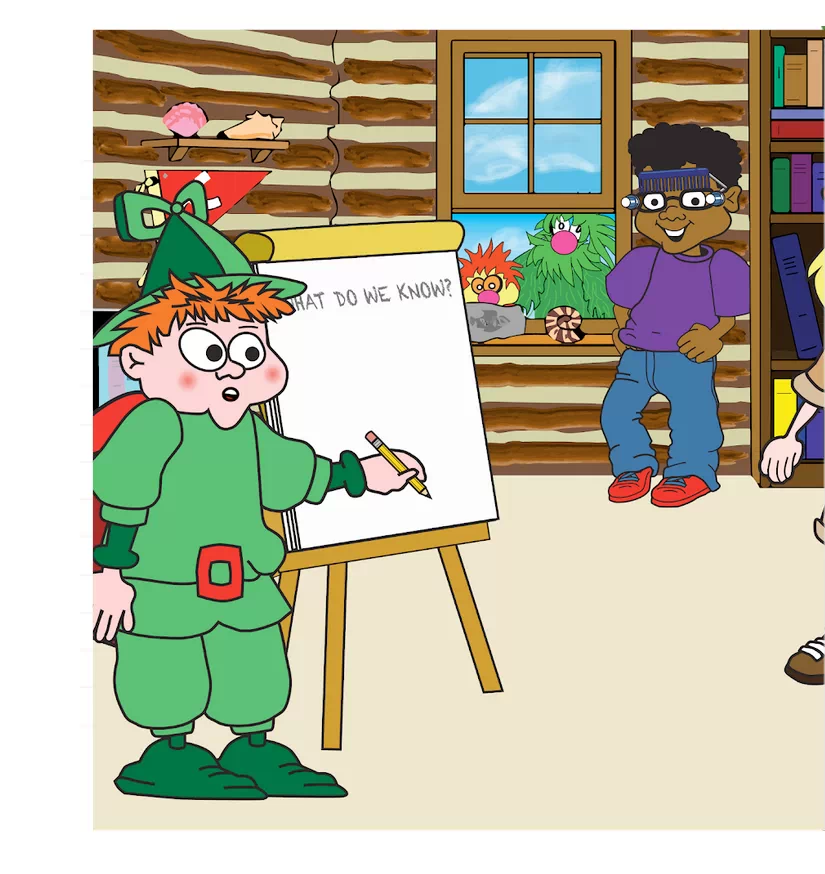
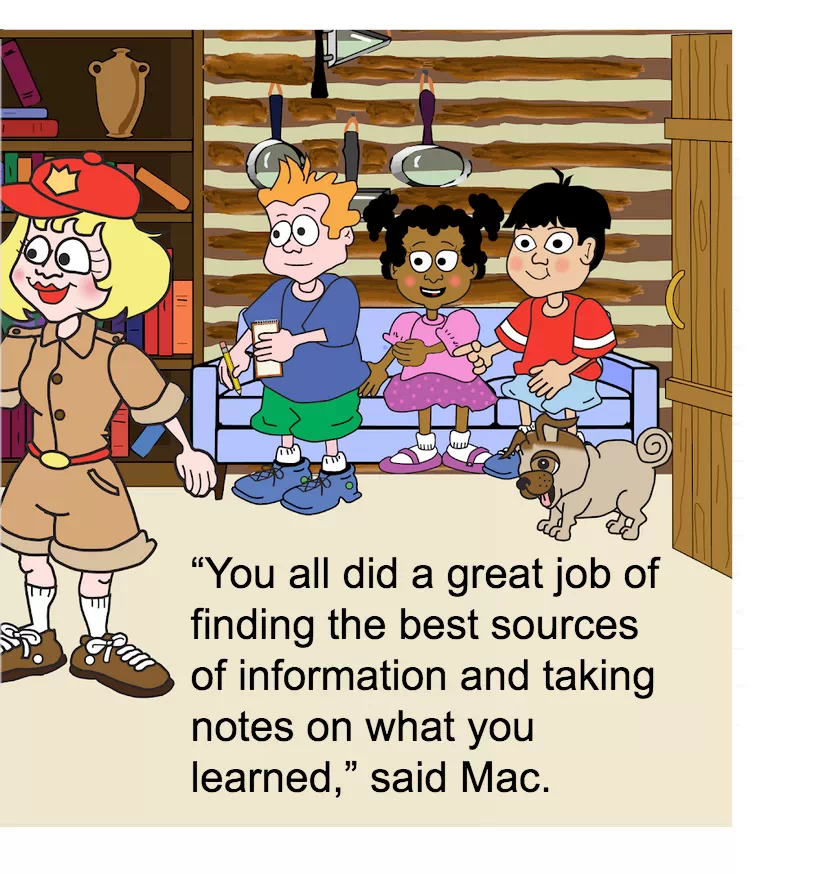
Before using what they have learned to figure out how to solve the fish problem, Mac suggests they make a list of new facts they learned to help better understand the problem.
Remember, facts are true statements, not opinions or wishes.
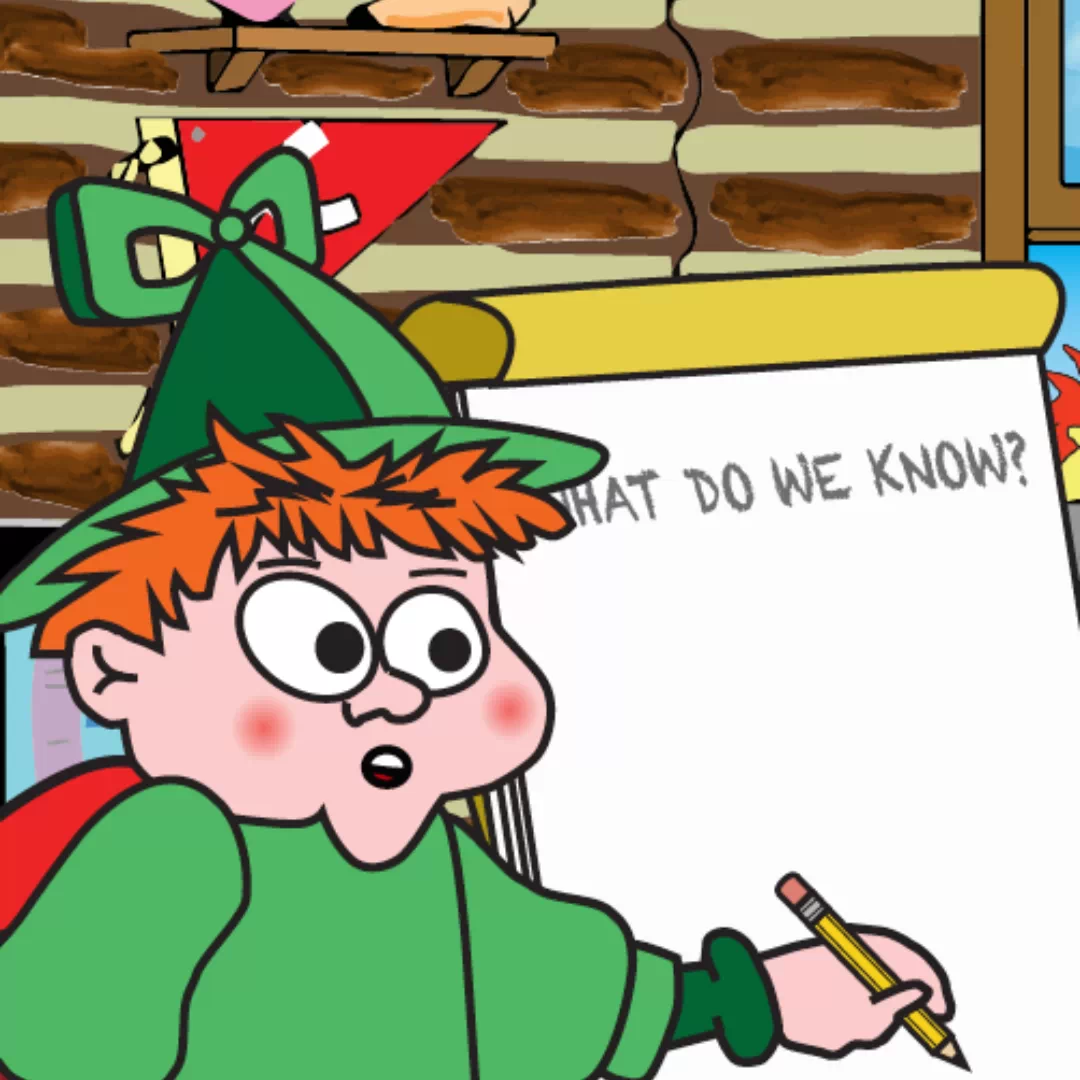
Mac asks the group, “Who would like to start?”
Muff and Scruff immediately raise their hands. These characters live in the Marshlands of Curiosity Creek. They speak their own language but Hector understands them. Muff shares his thought.
Hector translates for Muff. “Muff says that almost all of the fish were sick starting yesterday and their tummies hurt!”
Timmy chimes in and says, “And they made funny noises.” Digger barks, “Woof!” as if agreeing with Timmy.
Mac writes on the flipchart: “The fish’s tummy problems started yesterday”.
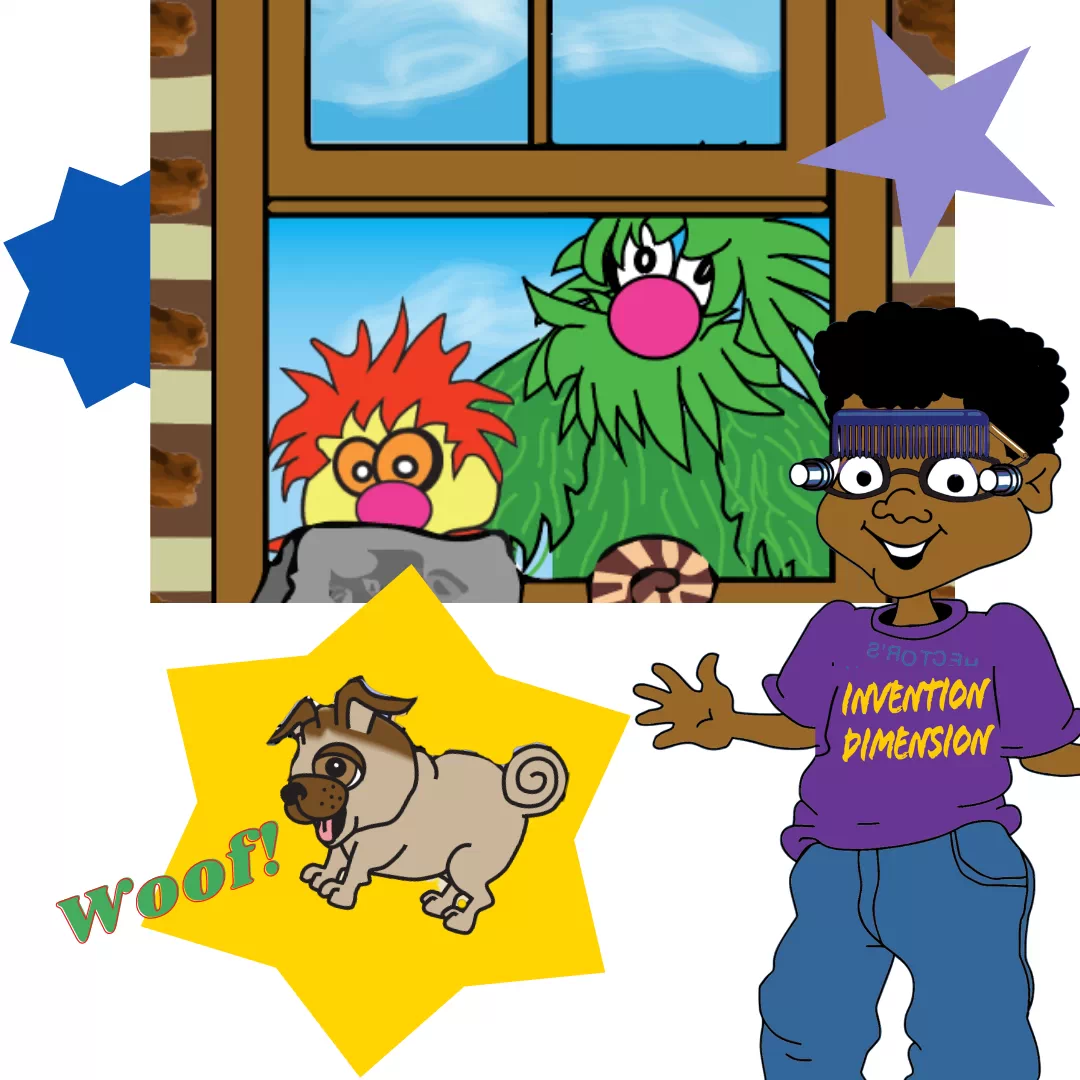
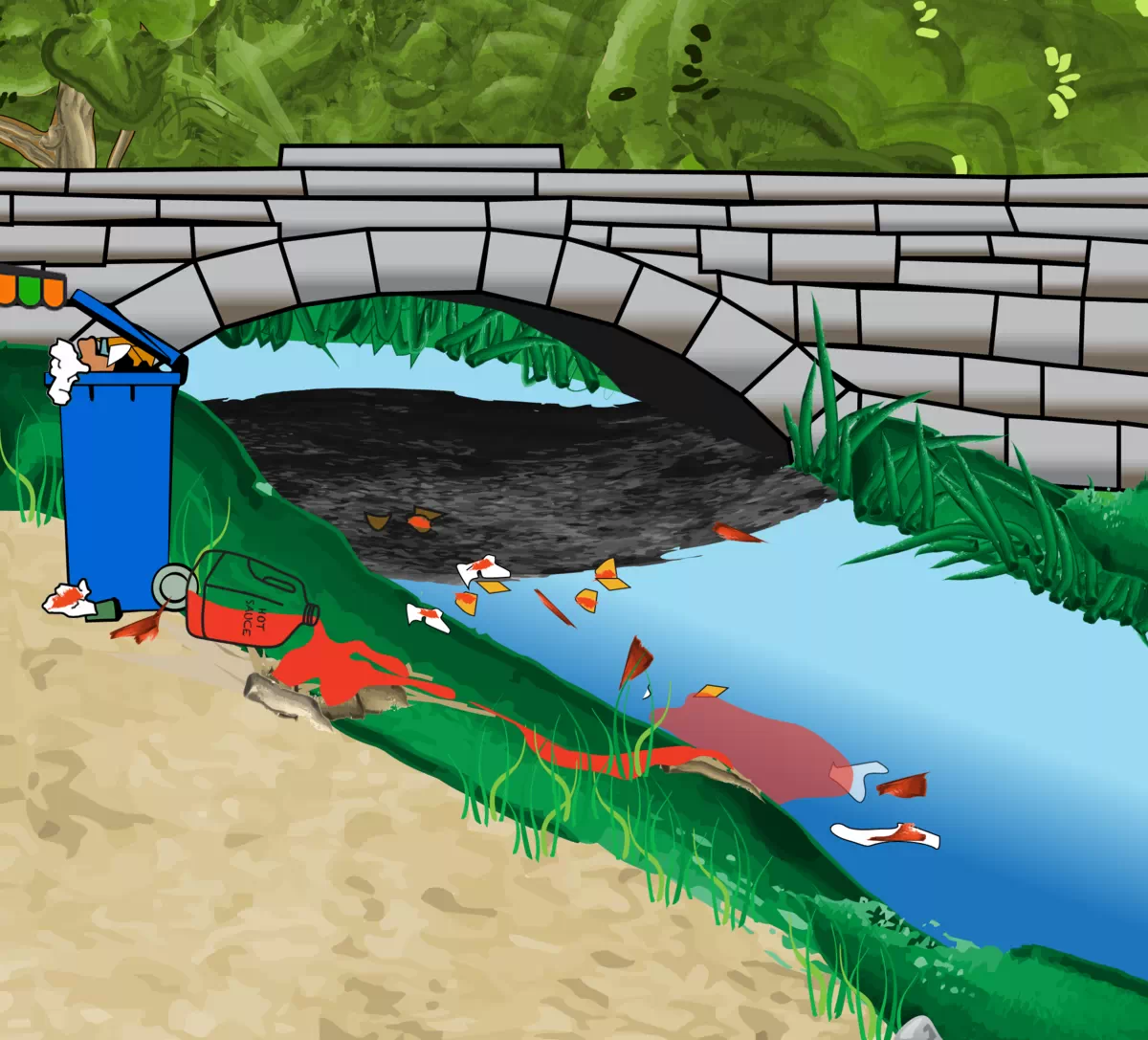
Mimi (that's me!) grins and says to the group, “I think you kids have discovered what is causing the problem for the fish. I noticed there is only one garbage can in that area of the park for people to throw their trash into and it was filled to the brim with trash.
There are no other trash cans at the creek. So, if people buy food at the “Hot & Spicy” food truck and the trash bin is full, some might throw their leftovers on the ground or even into the creek.”
The kids gasp!
Mac jumps in and says, “OK, now we have some more useful information. But do we have all the information we need to come up with a solution? Can anyone think of anything we don’t know, but need to find out?”
Hector says, “We don’t know if hot and spicy food is bad for fish.” Tanisha chimes in and says, “We don’t know why there are so few trash bins.”
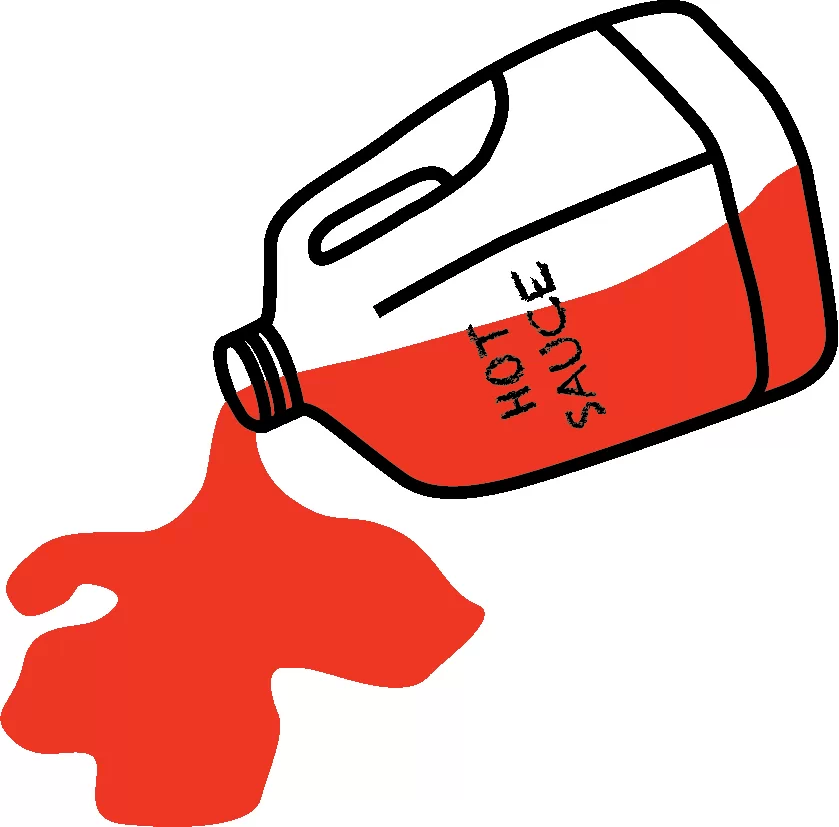
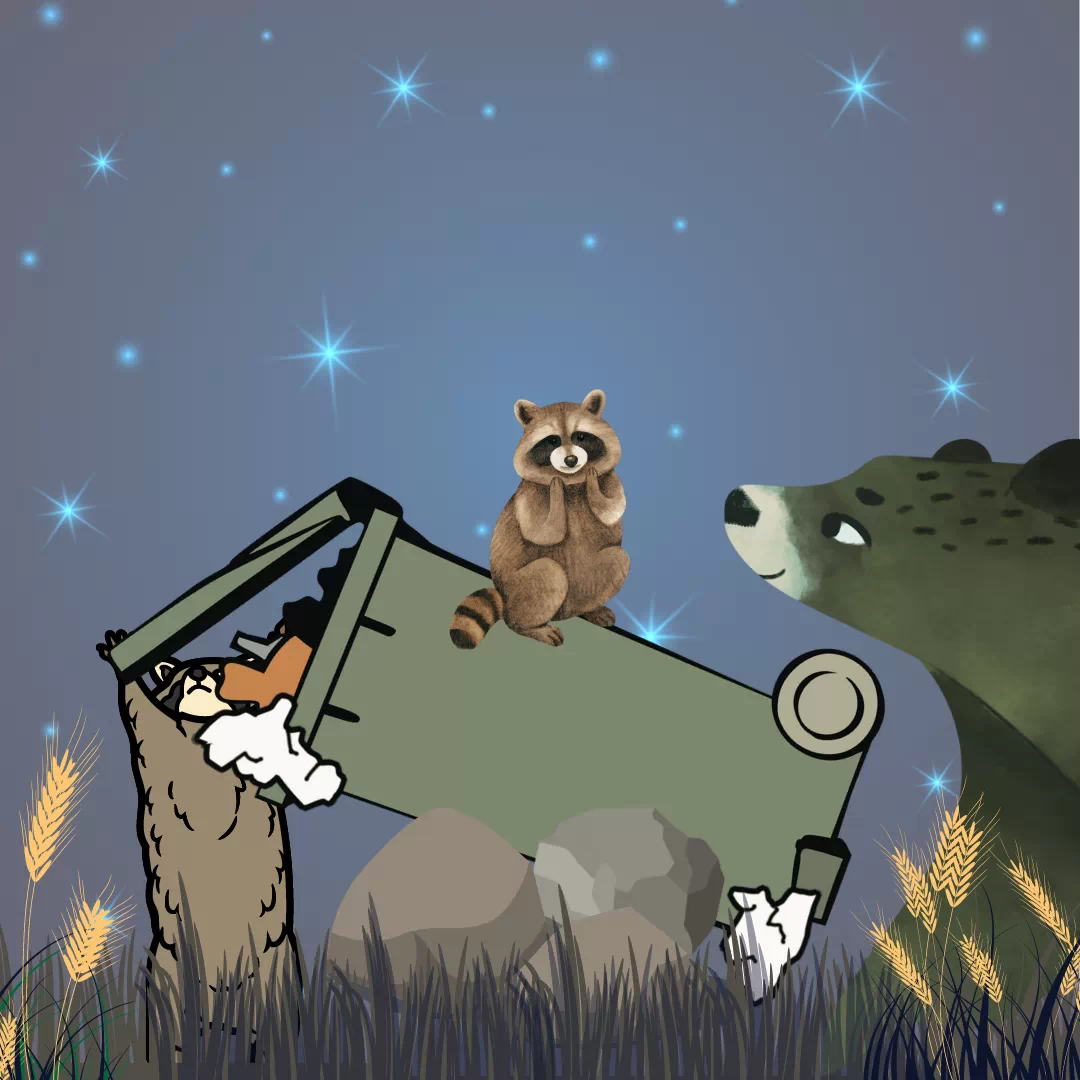
Then, I said, “Those are two very important questions, and I can answer them. We didn’t need many trash cans until the food trucks arrived at the park.
The park ranger told me that at night, animals such as bears or raccoons knock the trash can over looking for food. The trash spills everywhere, making a terrible mess. I have seen food wrappers on the ground close to the creek.
And yes, I did read that hot and spicy food can cause tummy problems in animals.”
It looks like the kids have all the information they need. Mac writes all of the facts discussed by the group on the flipchart easel. Read each one out loud!
- The fish’s tummy problems started yesterday.
- Fish can develop tummy problems from eating the wrong thing.
- This week, a new food truck selling hot and spicy food opened near the creek.
- There is only one trash can in the park.
- Fish can get sick if people throw food leftovers into the creek.
- Animals can knock over trash bins.
- Spicy food can cause tummy problems in fish.
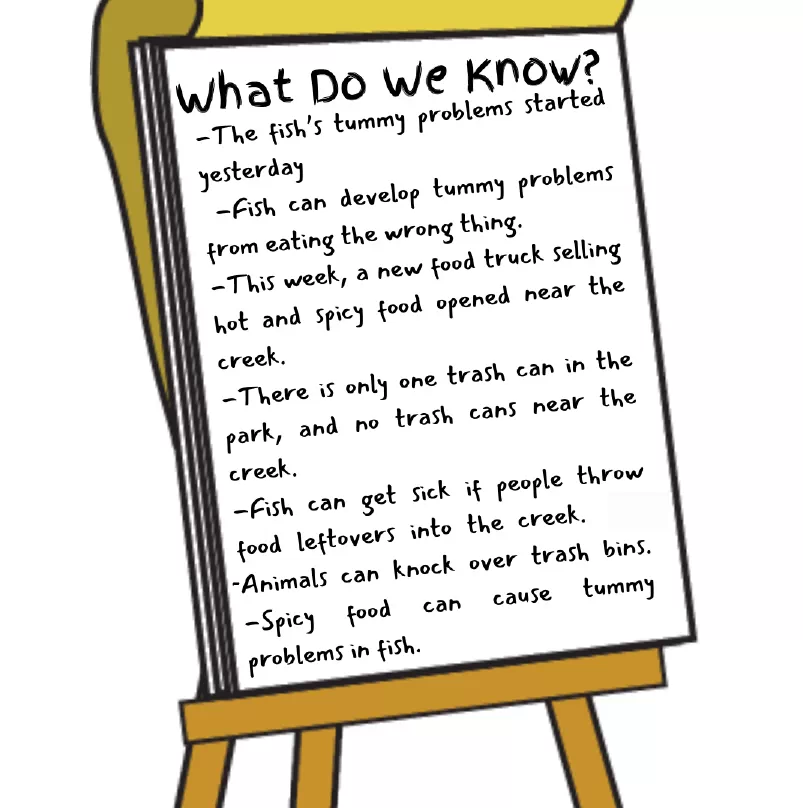
Suddenly, there’s a swirl of pixie dust emerging and tinkling bell sound next to Mac.
Chen exclaims, “Whoa! There’s some magical pixie dust coming from behind the easel! Do you think it’s Teenie Genie coming to help us again?!”
Mac pushes the flip chart easel to the side to reveal Teenie Genie inside a floating rainbow bubble surrounded by swirls of pixie dust. The kids Ooh and Aah.
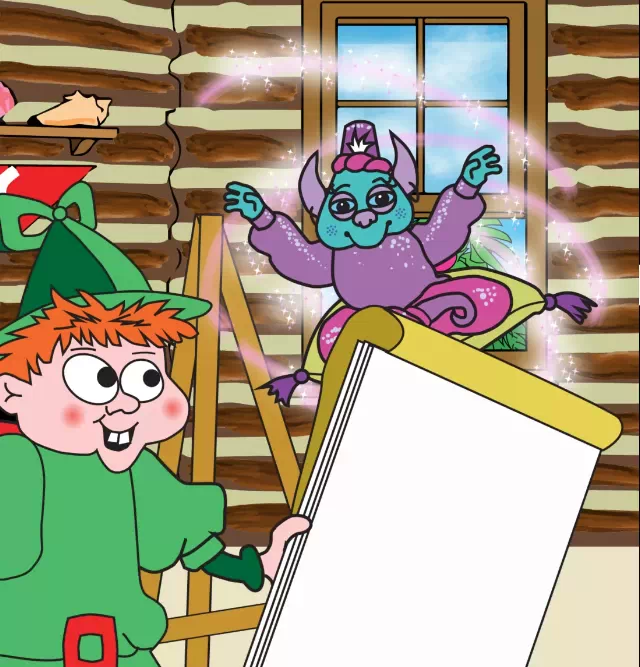
Teenie Genie says, “I hope your invention journey is going well so far, and I’m rooting for you! I also wanted to give you your new tool…an idea capturing net! You’ll need it for your next challenge. Good luck, friends!"
A swirl of pixie dust forms around the rainbow bubble, and Teenie Genie disappears in a whoosh.
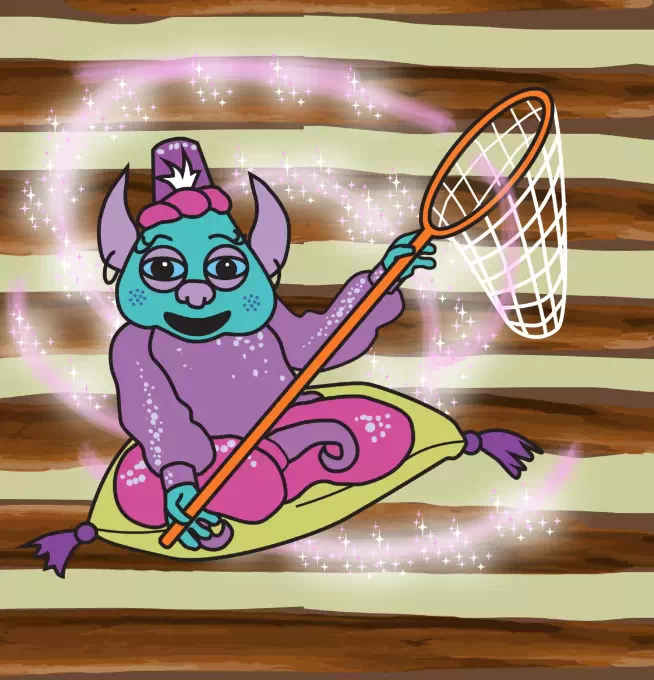
Mac says, “Now it’s time for us to think about all of those facts we’ve learned and how we might use them to solve this problem. Then we’ll brainstorm some possible ideas for solutions.”
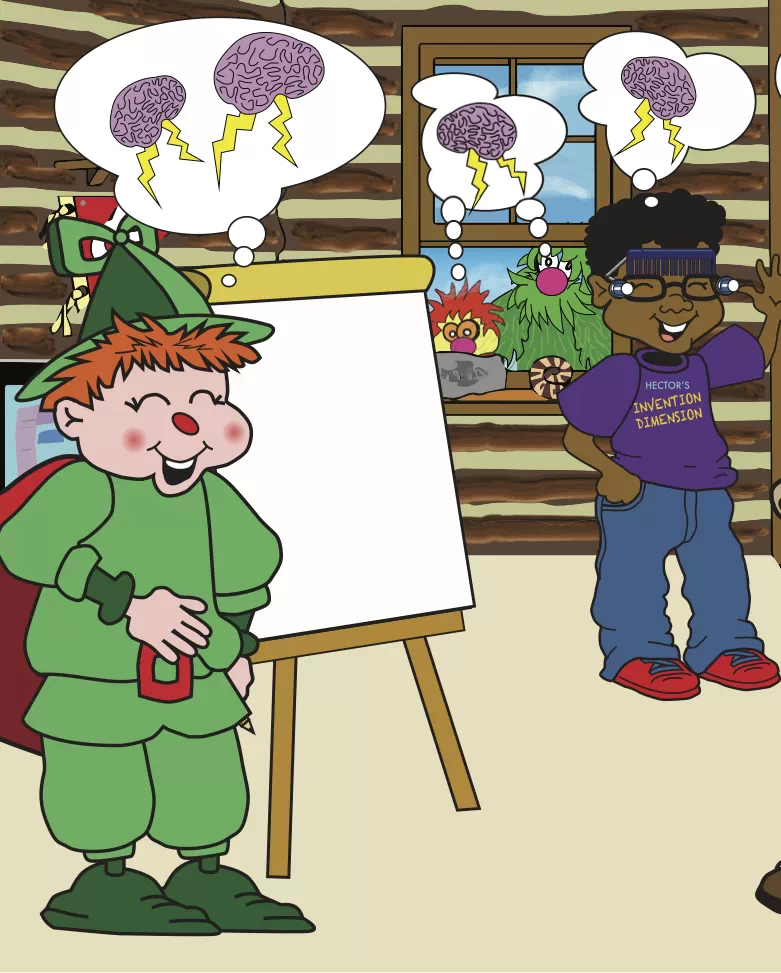
Chen says, “Brainstorm? What’s that? Do you mean there’s a storm in your brain?” The Curious Kids all imagine a brain with lightning bolts and rainstorms and they giggle.
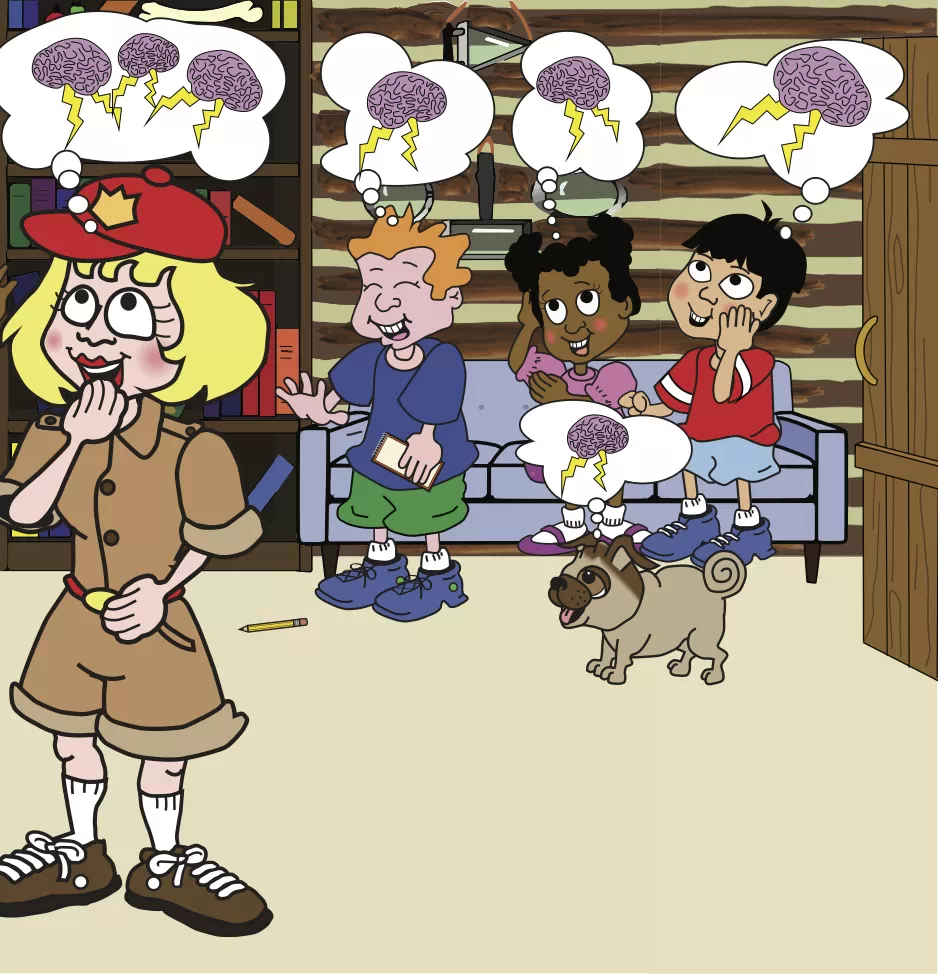
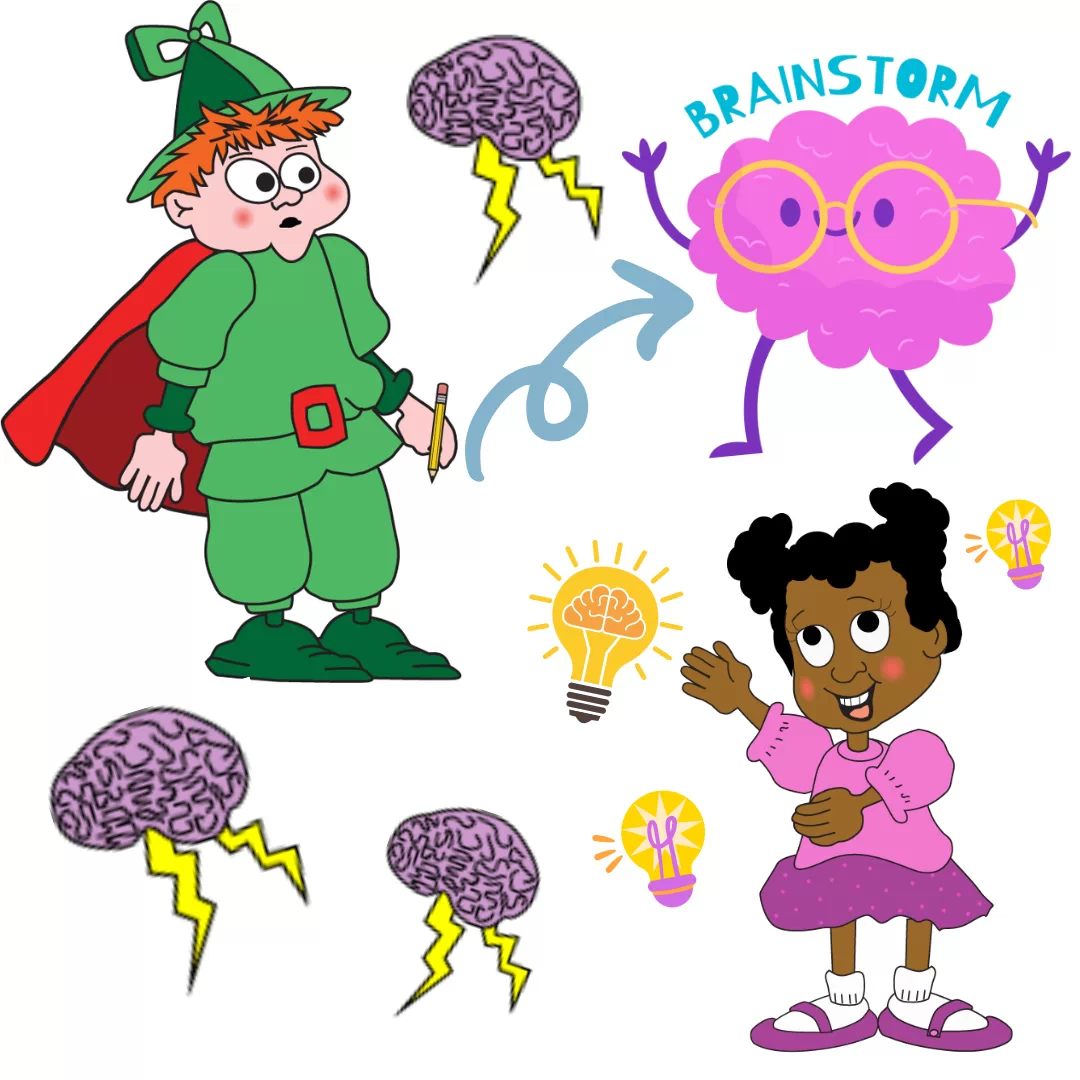
Mac says, “Brainstorming is when everyone thinks about ideas for how to solve a problem and then everyone shares their ideas. After everybody has offered at least one idea, we look at our list of ideas, discuss them, and then vote on what we think is the best idea.”
Tanisha jumps up and down excitedly and says, “You mean I can let my imagination think of all kinds of crazy ideas? Cool!”
Mac answers her, “Yes! In brainstorming, every idea is useful for helping us find the best solution. So, let’s all use our imaginations! Let’s get this brainstorming session started.”
Get Ready for a New Game Challenge!
Guess what?! It's time for our Adventure 2 Game Challenge. Here's the scoop. You will have to capture 7 ideas the kids thought of. Thought bubbles will pop up all around the clubhouse. Just use the net to capture a thought bubble idea. Thought bubbles will appear and disappear quickly!
Once you have captured all 7 ideas, you can move forward. Remember, we want to help the fish as soon as possible, so work quickly. If you run out of time, it’s okay… just click on the timer again for some extra time.
Once you collect all 7 ideas, they will appear on the flipchart so everyone can discuss them. When you are ready, turn the page and click on the START button to begin the gameplay. Good luck capturing those thought bubbles!
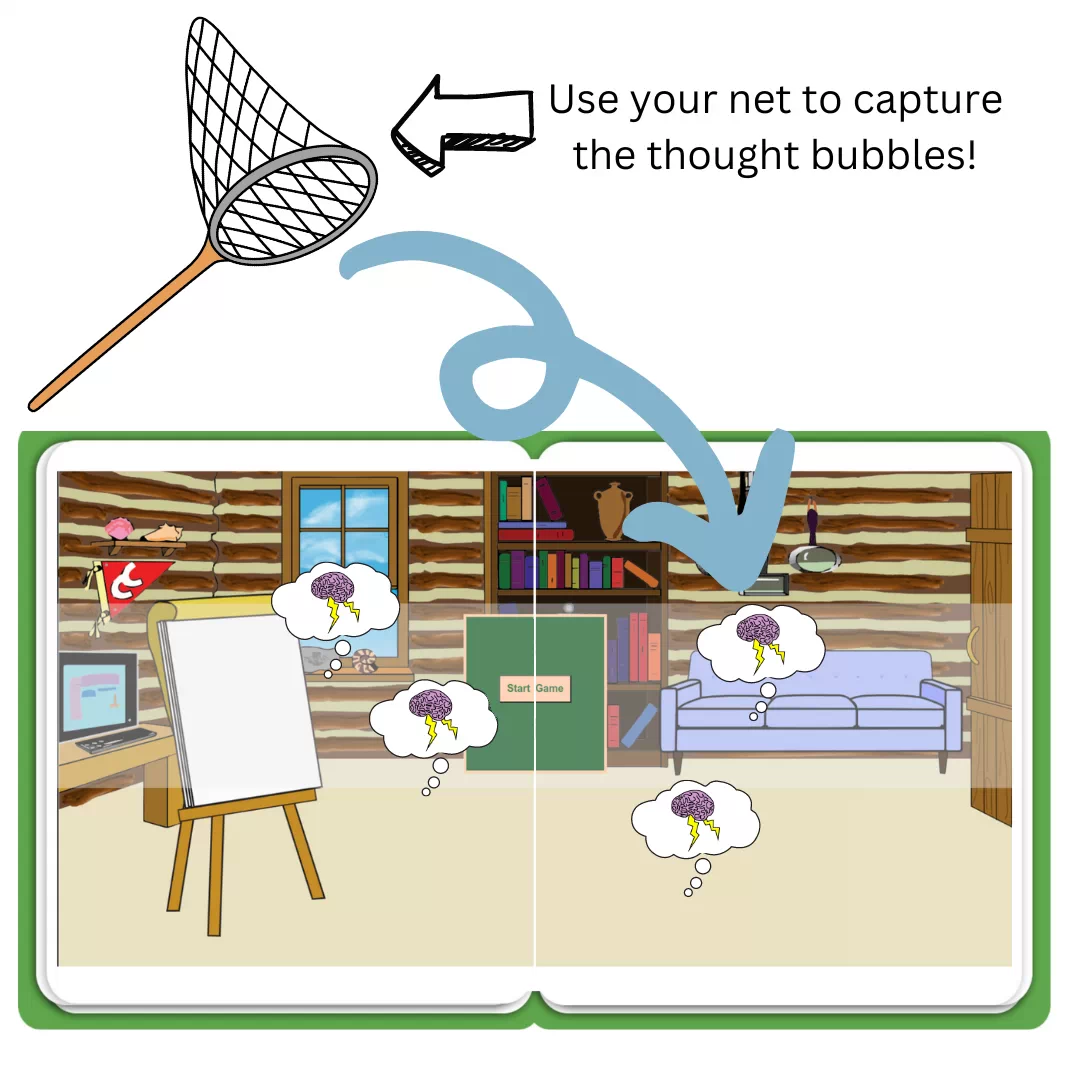


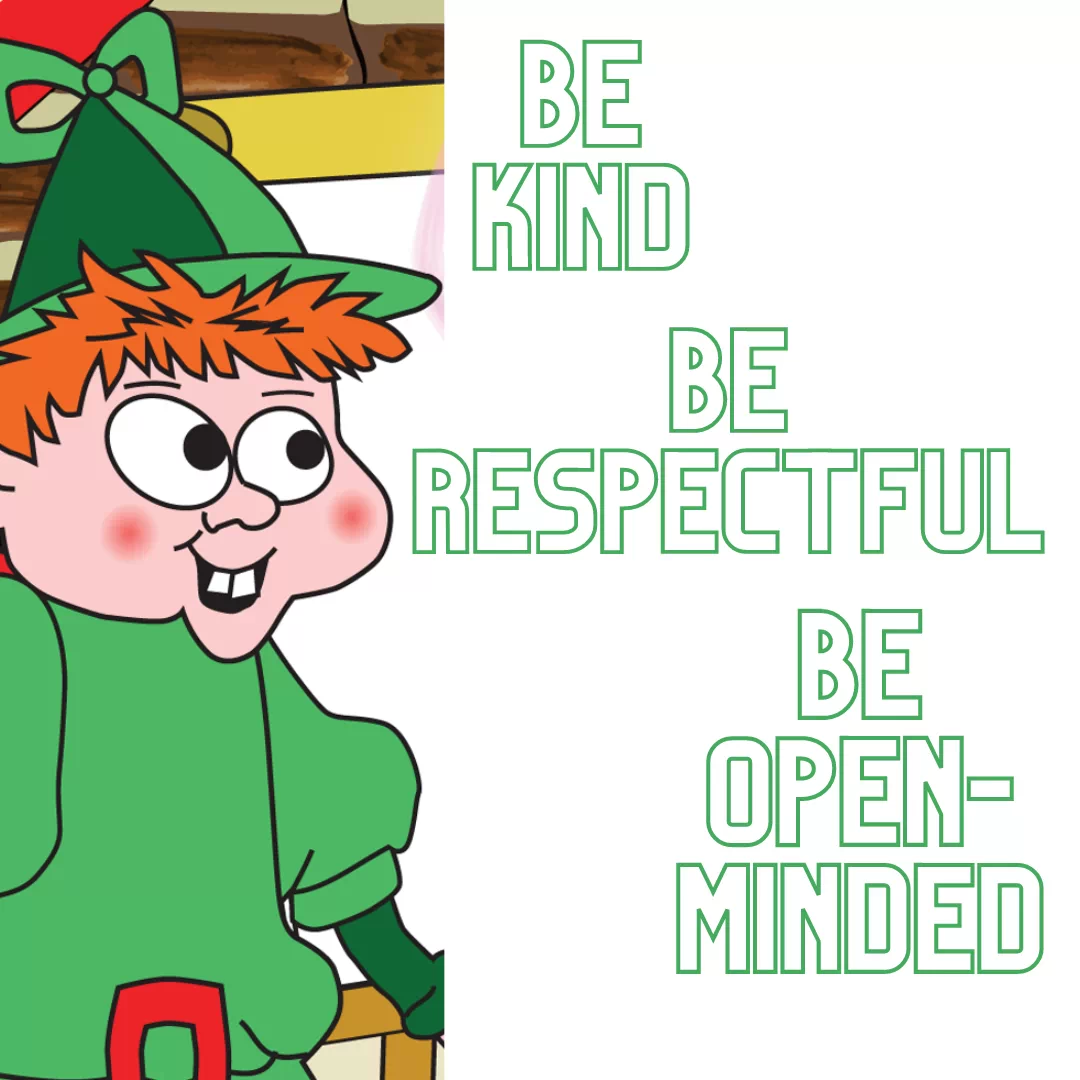
Mac was pleased with the responses but that was just the first part of the challenge. Mac explains the next part.
Mac says, "Now, let’s discuss each of the ideas we came up with! When discussing ideas during brainstorming, it is important to be kind, respectful, and open-minded about other people’s ideas. We’re a team and how you express and respond to other people’s ideas is important to being a great team member.”
When you are ready to listen to each of the ideas, turn the page and then click on each of the thought bubbles to hear the Curious Kids and their creature friends share their ideas.
Let's review all the great ideas the Curious Kids and their creature friends came up with during their brainstorming session! They include:
- Robot trash picker upper
- Trash cans disguised as trees
- Cameras and fines for throwing trash
- Signs at the creek
- Trash cans hanging from trees
- Trash can with a heavy base
- Trash can with a lockable lid handle
Wow! Those are some excellent ideas. Suddenly, Tanisha had even another idea. She was so excited. Turn the page to find out.
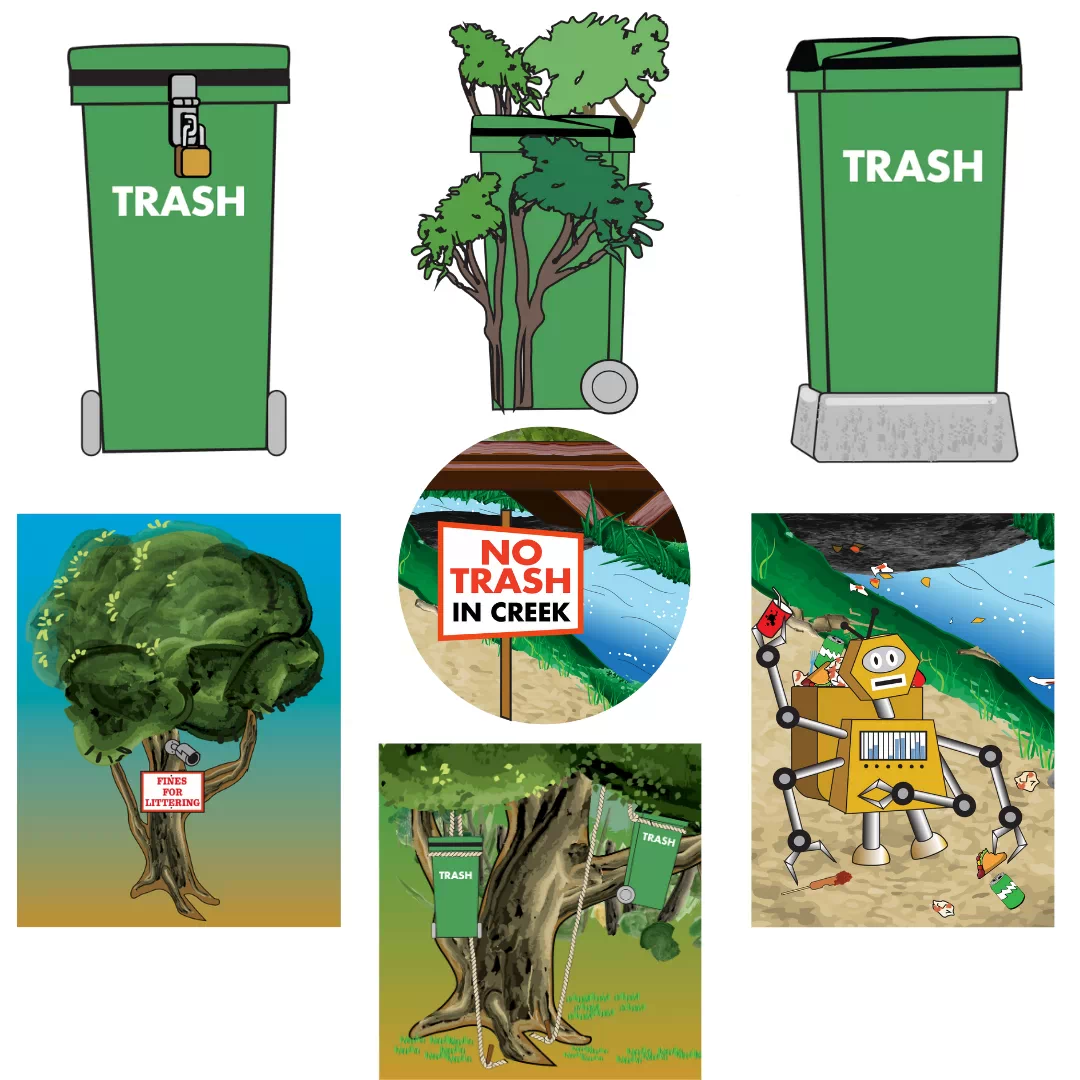
Tanisha exclaimed, “Oooo! I have another idea! What if we joined two ideas together? What if we created a trash can with a heavy base AND a lock handle? Why not put two good things together to make it even better!” The new combination idea was added to the flipchart.
Timmy added: “Like a chocolate and vanilla swirl ice cream cone!”
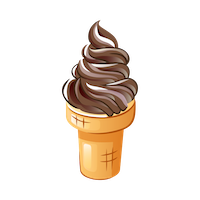
Digger licked his lips and barked “WOOOffff, yummmmm.” All the kids giggled.
“Great idea, Tanisha!" said Mac. "Sometimes one idea makes you think of another, even BETTER idea, or you can COMBINE ideas, like Tanisha did. Let’s add that to our list. Now we have eight solution ideas!”
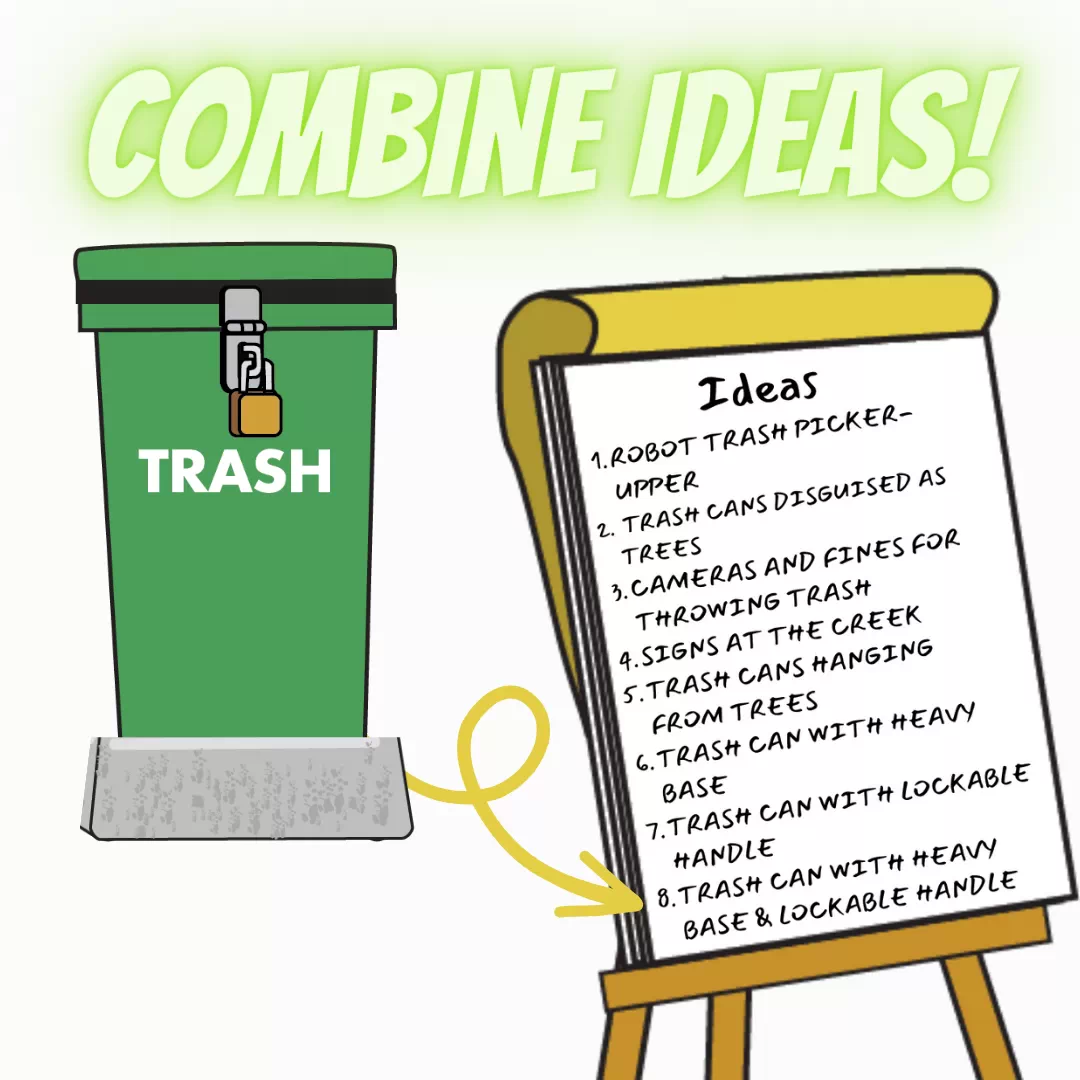
Great job coming up with so many creative ideas! Generating lots of ideas is an important part of the brainstorming process before we can narrow down our list to one that we think is the best idea.

The group discusses all the different ideas from the brainstorming session. Together, they assessed each idea by asking questions such as: Does this idea work well to solve the problem? Can we actually build this idea quickly enough to help the fish? After a lively discussion, the Curious Kids all voted on their favorite ideas. Now, Mac is ready to reveal the results of the vote!
Mac says, “Alright everyone, here are the results of the vote…” There is a long pause and all the Curious Kids eagerly wait to hear the results, holding their breath.
Mac announces, “The two ideas with the most votes were--- the heavy based trash can with the lockable handle and the signs at the creek… So, we’ll create both ideas! Some of you can choose to make the signs for the creek and the others can work on creating a concrete based trash can with a lockable lid handle.”
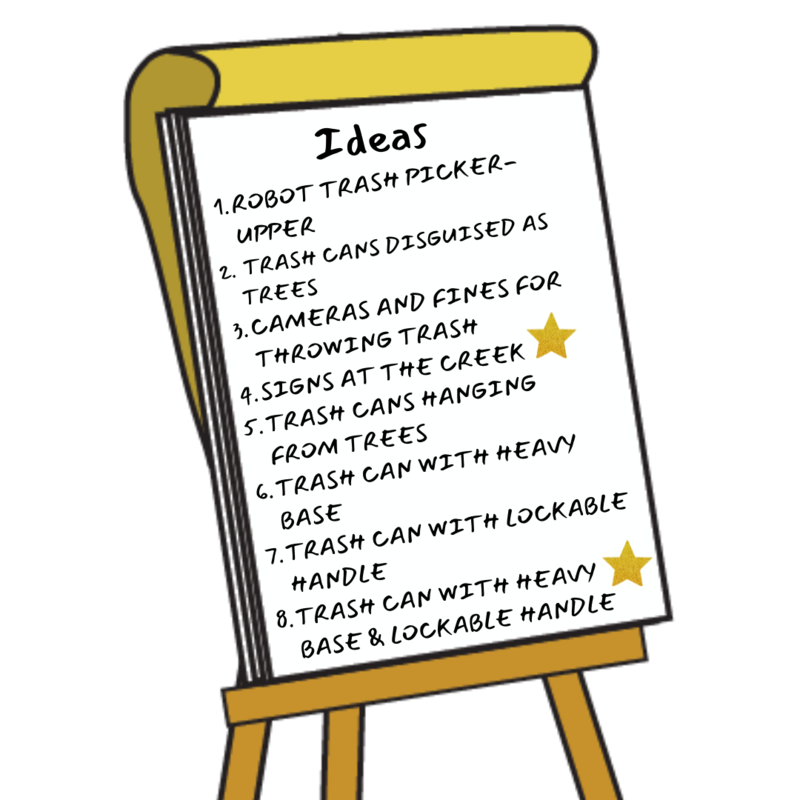
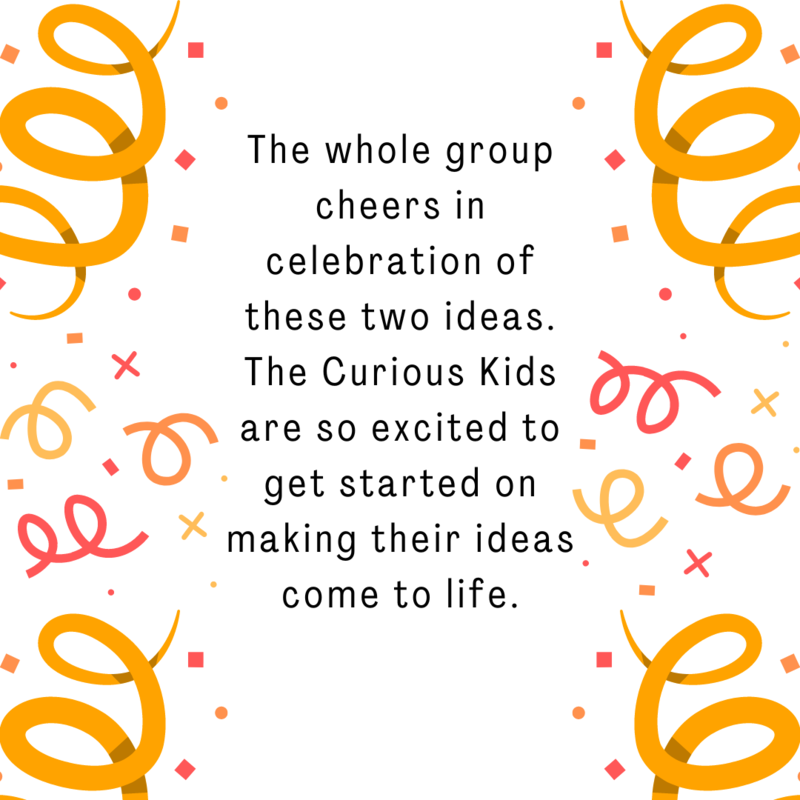
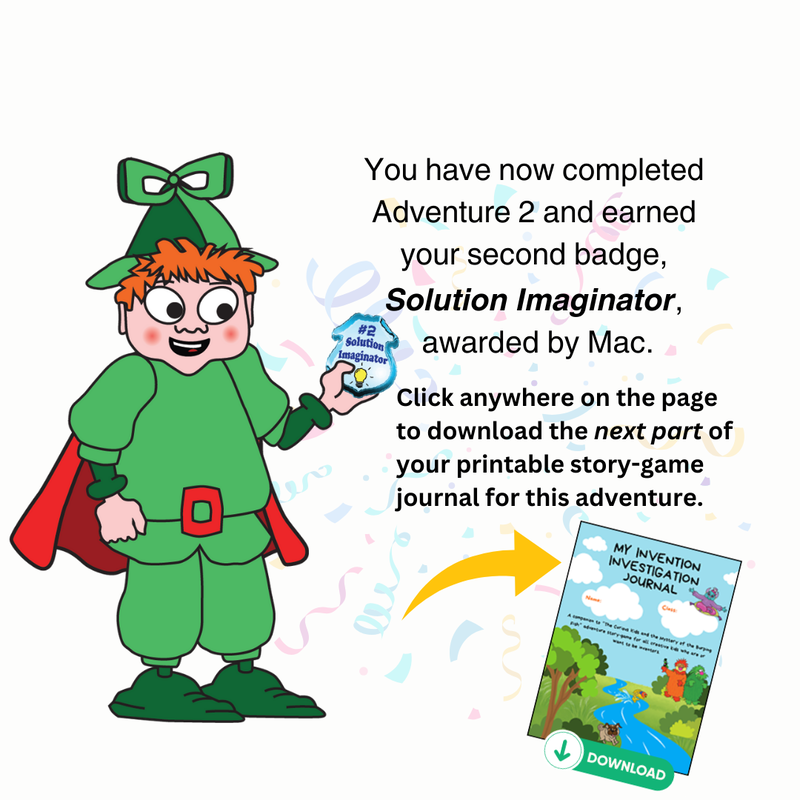
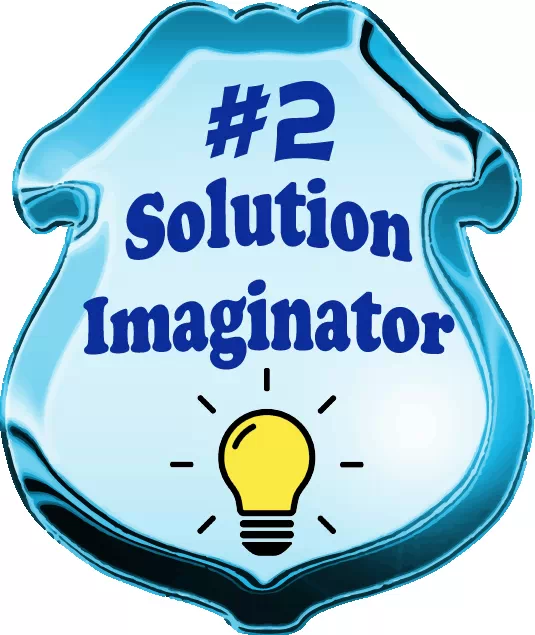
 Digger’s Great Green Glossary
Digger’s Great Green Glossary